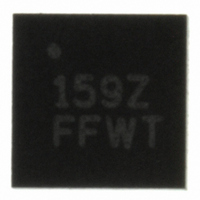ISL3159EIRZ Intersil, ISL3159EIRZ Datasheet - Page 10

ISL3159EIRZ
Manufacturer Part Number
ISL3159EIRZ
Description
TXRX ESD 5V RS-485/422 10-DFN
Manufacturer
Intersil
Type
Transceiverr
Datasheet
1.ISL3159EIRZ.pdf
(16 pages)
Specifications of ISL3159EIRZ
Number Of Drivers/receivers
1/1
Protocol
RS422, RS485
Voltage - Supply
4.5 V ~ 5.5 V
Mounting Type
Surface Mount
Package / Case
10-DFN
Lead Free Status / RoHS Status
Lead free / RoHS Compliant
Available stocks
Company
Part Number
Manufacturer
Quantity
Price
Company:
Part Number:
ISL3159EIRZ
Manufacturer:
Intersil
Quantity:
20
Company:
Part Number:
ISL3159EIRZ
Manufacturer:
Intersil
Quantity:
374
Company:
Part Number:
ISL3159EIRZ-T7A
Manufacturer:
Intersil
Quantity:
500
design of equipment meeting level 4 criteria without the need
for additional board level protection on the RS-485 port.
AIR-GAP DISCHARGE TEST METHOD
For this test method, a charged probe tip moves toward the
IC pin until the voltage arcs to it. The current waveform
delivered to the IC pin depends on approach speed,
humidity, temperature, etc., so it is more difficult to obtain
repeatable results. The ISL3159E RS-485 pins withstand
±15kV air-gap discharges.
CONTACT DISCHARGE TEST METHOD
During the contact discharge test, the probe contacts the
tested pin before the probe tip is energized, thereby
eliminating the variables associated with the air-gap
discharge. The result is a more repeatable and predictable
test, but equipment limits prevent testing devices at voltages
higher than ±9kV. The RS-485 pins of the ISL3159E survive
±8kV contact discharges.
Hot Plug Function
When a piece of equipment powers up, there is a period of
time where the processor or ASIC driving the RS-485 control
lines (DE, RE) is unable to ensure that the RS-485 Tx and
Rx outputs are kept disabled. If the equipment is connected
to the bus, a driver activating prematurely during power up
may crash the bus. To avoid this scenario, the ISL3159E
incorporates a “Hot Plug” function. Circuitry monitoring V
ensures that, during power up and power down, the Tx and Rx
outputs remain disabled, regardless of the state of DE and RE,
if V
chance to stabilize and drive the RS-485 control lines to the
proper states.
Data Rate, Cables, and Terminations
Twisted pair is the cable of choice for RS-485, RS-422, and
PROFIBUS networks. Twisted pair cables tend to pick up
noise and other electromagnetically induced voltages as
5.0
2.5
FIGURE 7. HOT PLUG PERFORMANCE (ISL3159E) vs
CC
0
is less than ~3.2V. This gives the processor/ASIC a
V
A/Y
RO
CC
ISL83088E WITHOUT HOT PLUG CIRCUITRY
3.3V
TIME (40μs/DIV)
ISL3159E
ISL3159E
10
3.1V
DE, DI = V
RE = GND
R
R
L
L
= 1kΩ
= 1kΩ
CC
CC
5.0
2.5
5.0
2.5
0
0
ISL3159E
common mode signals, which are effectively rejected by the
differential receivers in these ICs.
According to guidelines in the RS-422 and PROFIBUS
specifications, networks operating at data rates in excess of
3Mbps should be limited to cable lengths of 100m (328 ft) or
less, and the PROFIBUS specification recommends that the
more expensive “Type A” (22AWG) cable be used. The
ISL3159E’s large differential output swing, fast transition
times, and high drive-current output stages allow operation
even at 40Mbps over standard “CAT5” cables in excess of
100m (328 ft). Figure 17 details the ISL3159E performance
at this condition, with a 120Ω termination resistor at both the
driver and the receiver ends. Note that the differential signal
delivered to the receiver at the end of the cable (A-B) still
exceeds 1V, so even longer cables could be driven if lower
noise margins are acceptable. Of course, jitter or some other
criteria may limit the network to shorter cable lengths than
those discussed here. If more noise margin is desired,
shorter cables produce a larger receiver input signal as
illustrated in Figure 16. Performance should be even better if
the “Type A” cable is utilized.
The ISL3159E may also be used at slower data rates over
longer cables, but there are some limitations. The Rx is
optimized for high speed operation, so its output may glitch if
the Rx input differential transition times are too slow.
Keeping the transition times below 500ns, (which equates to
the Tx driving a 1000’ (305m) CAT 5 cable) yields excellent
performance over the full operating temperature range.
To minimize reflections, proper termination is imperative when
using this high data rate transceiver. In point-to-point, or point-
to-multipoint (single driver on bus) networks, the main cable
should be terminated in its characteristic impedance (typically
120Ω for “CAT5”, and 220Ω for “Type A”) at the end farthest
from the driver. In multi-receiver applications, stubs
connecting receivers to the main cable should be kept as
short as possible. Multipoint (multi-driver) systems require that
the main cable be terminated in its characteristic impedance
at both ends. Stubs connecting a transceiver to the main cable
should be kept as short as possible.
Built-In Driver Overload Protection
As stated previously, the RS-485 specification requires that
drivers survive worst case bus contentions undamaged.
These transmitters meet this requirement via driver output
short circuit current limits, and on-chip thermal shutdown
circuitry.
The driver output stages incorporate short circuit current
limiting circuitry which ensures that the output current never
exceeds the RS-485 specification, even at the common
mode voltage range extremes. In the event of a major short
circuit condition, the device also includes a thermal
shutdown feature that disables the drivers whenever the die
temperature becomes excessive. This eliminates the power
dissipation, allowing the die to cool. The drivers
automatically reenable after the die temperature drops about
July 26, 2007
FN6364.0












